Shape identification Normal Geometry Worksheets for Ages 3-7
5 filtered results
-
From - To
Discover the ultimate resource for young learners with our Shape Identification Normal Geometry Worksheets, specially designed for ages 3-7! These engaging worksheets help children recognize and identify basic shapes through fun activities and colorful illustrations. Perfect for preschool to early elementary students, the worksheets boost foundational geometry skills while promoting fine motor development. Tailored to foster critical thinking, these exercises offer the right balance of challenge and enjoyment. Whether used in classroom settings or for at-home practice, our worksheets lay a solid groundwork for future math success in a playful and interactive manner.
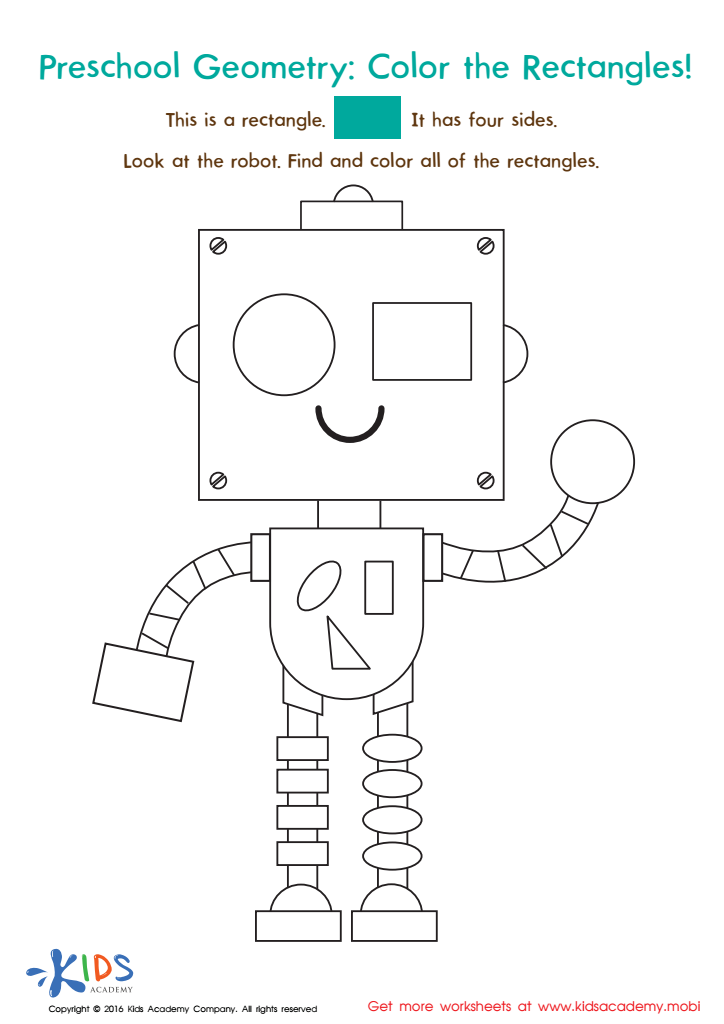

Geometry Worksheet
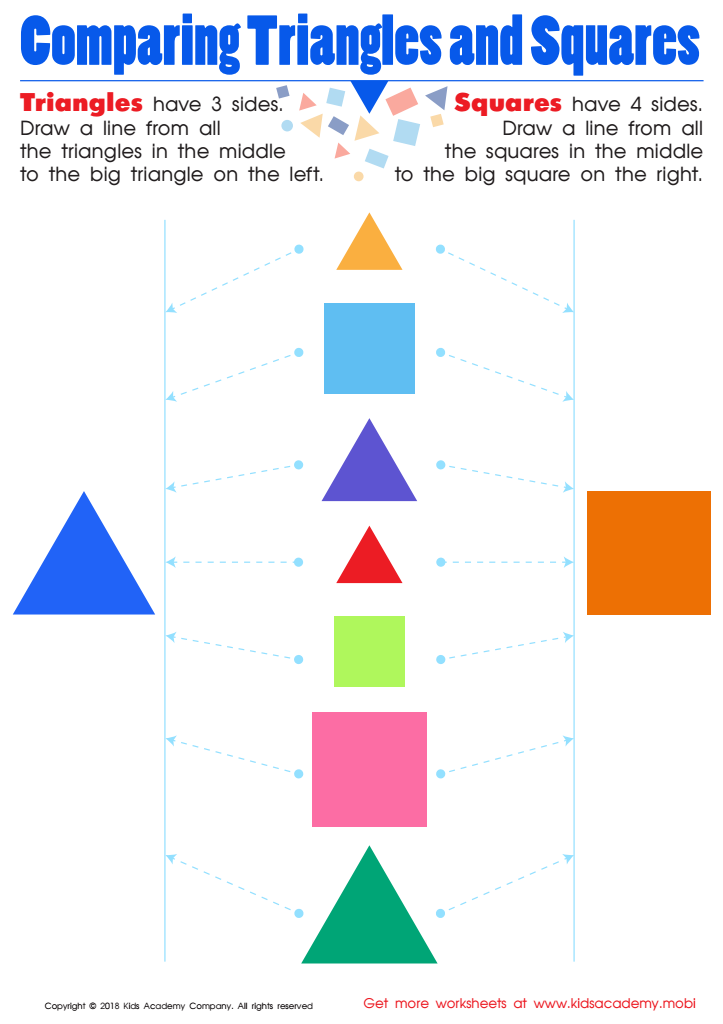

Comparing Triangles Squares Worksheet
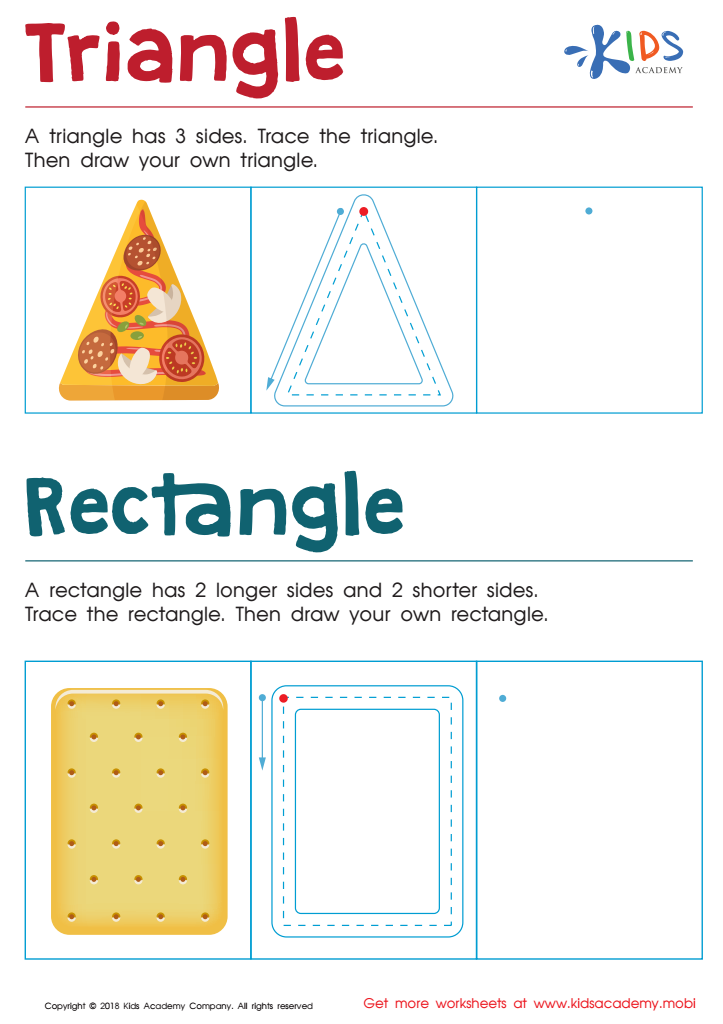

Triangle Rectangle Worksheet
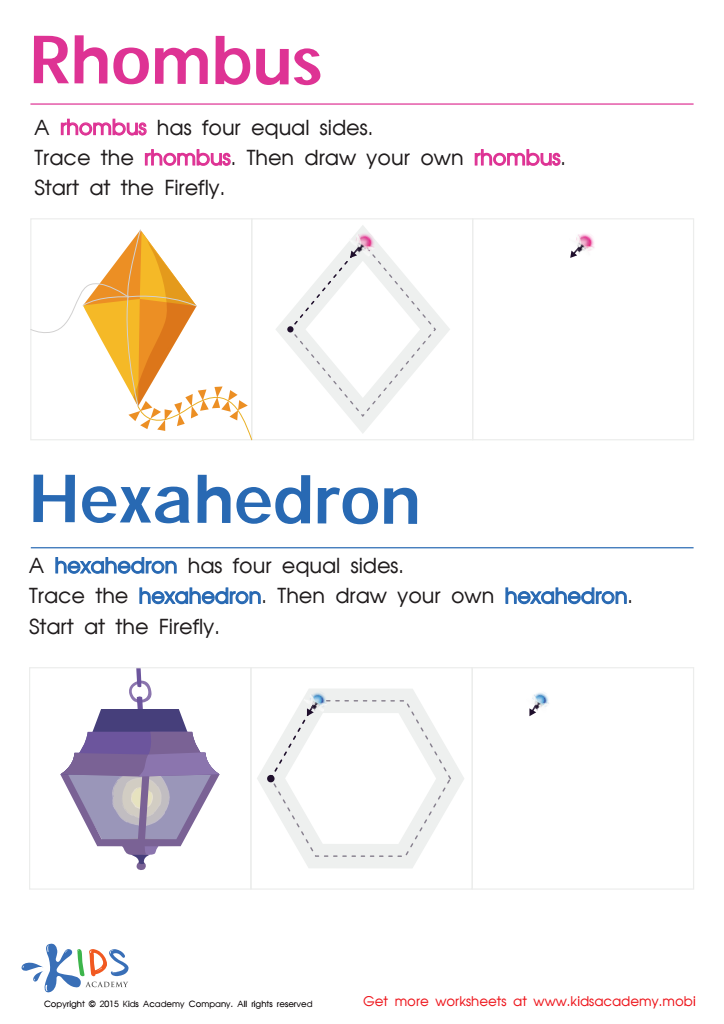

Draw a Rhombus And a Hexahedron Printable
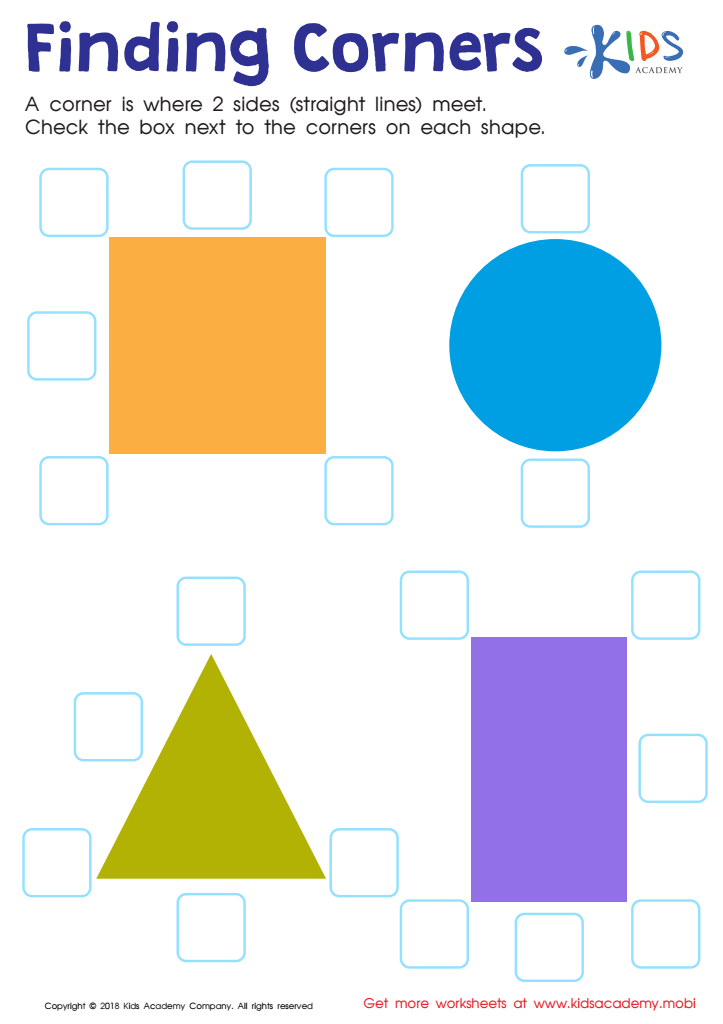

Finding Corners Worksheet
Shape identification is a fundamental skill that forms the basis for many advanced areas of learning. For children aged 3-7, recognizing and understanding shapes is crucial for several reasons. Firstly, shape identification enhances cognitive development. As young minds learn to distinguish between various shapes, they exercise their visual-spatial skills, crucial for problem-solving and logical thinking.
Secondly, an early understanding of shapes significantly contributes to mathematical learning. Basic geometry, involving shapes like circles, squares, and triangles, underpins many mathematical concepts children will encounter later, such as patterns, symmetry, and area. Grasping these ideas early sets a strong foundation for future math success.
Moreover, shape recognition aids language development. As children learn the names and attributes of different shapes, they expand their vocabulary and language skills, important for effective communication.
Additionally, shapes are omnipresent in our environment. Recognizing them helps children navigate and make sense of their surroundings, fostering their observational and comparison skills. This practical skill can enhance their ability to follow directions, complete puzzles, and appreciate art.
Lastly, knowing shapes builds confidence. Mastery of this skill gives children a sense of achievement, encouraging a positive attitude toward learning. Therefore, parents and teachers should give shape identification the attention it deserves in early education.
 Assign to My Students
Assign to My Students















